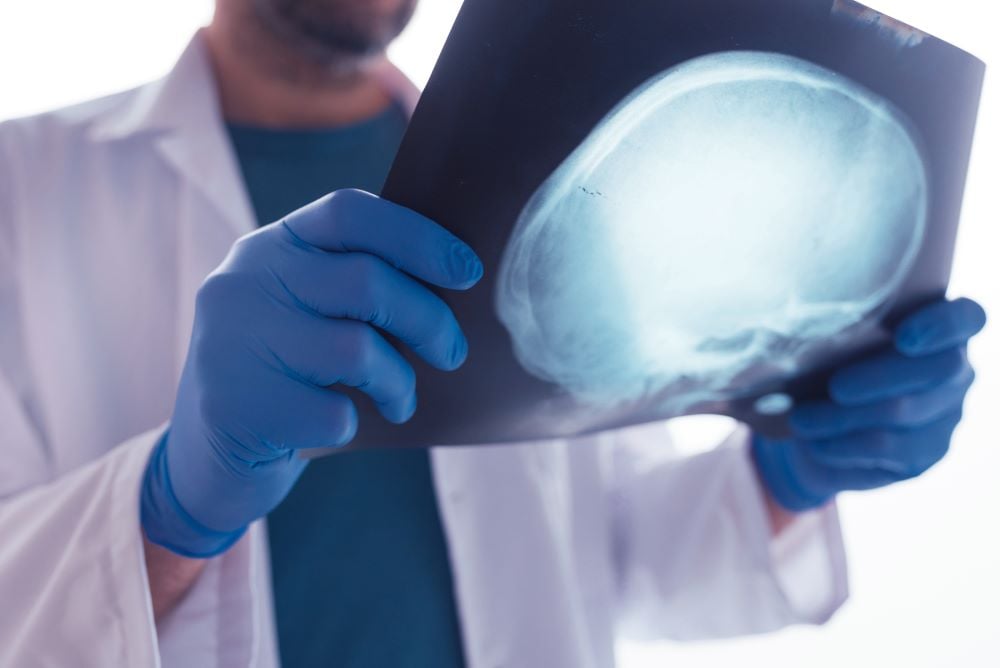Analyzing trauma cases can be complex. Adding to the complexity is the fact that some associated injuries may escape detection. Let’s look at the way ear injuries can be involved.
The most complex bone comprising the skull is the temporal bone. This bone contains most of the structures of the ear. Evaluation can be facilitated by breaking it down into its constituent parts.
The outermost area of the temporal bone contains the ear canal and the eardrum. The ear canal can be fractured. This can lead to tears in the eardrum. These injuries can cause pain, bleeding, hearing loss and infection, to name a few issues.
Farther down past the eardrum is the middle ear. There are three bones in the middle ear: malleus, incus and stapes. They are also commonly known as the hammer, the anvil and the stirrup. The function of these bones is to transmit sound energy from the eardrum to the inner ear. These bones can be fractured, dislocated and even driven into the inner ear. The stapes bone, or stirrup, is the last bone in the chain. There is an area of the stapes called the footplate. This connects the middle ear to the inner ear.
The inner ear has a structure that looks like a snail. It is the cochlea. This is where sound energy is processed before becoming nerve impulses going to the brain. The inner ear also contains three structures resembling loops. These are the semicircular canals. These canals sense movement and orientation. They are also connected to a nerve which transmits balance and movement information to the brain.
The facial nerve follows a complex course through the ear to the brain. It of course coordinates movements of the face.
To fully analyze these injuries a detailed CT scan is usually obtained. CT scans are like cross-sectional x-rays. The specific scan required is a CT of temporal bone. This highly sensitive test can determine the status of these tiny complex structures in the ear.
A hearing test, or audiogram, should be obtained. The status of the hearing can be determined as well as if the problem originates from the middle ear or the inner ear.
Damage to the middle ear may sometimes be addressed by surgery. Of course, hearing aids can be helpful in these situations. Fractures or other injuries to the cochlea are more difficult to deal with. Direct repair is essentially impossible with present-day techniques. Sometimes an implant can transmit sound to the opposite “good” side.
Ringing of the ear, or tinnitus, often accompanies hearing loss. Usually treatment of the underlying hearing loss is helpful. The ENT specialist has a variety of ways to help this bothersome symptom.
Dizziness and balance disorders are extremely important consequences of temporal bone injuries. Milder cases can often be treated with medications. Symptoms usually improve with time, such as weeks or months. Physical therapy can be helpful. Rare cases that are prolonged or severe may require surgery for correction.
Facial nerve injury is a frequent consequence of temporal bone trauma. Injuries to this nerve result in various degrees of impairment of facial movements. After testing, many injuries can be treated by medications and/or observation. More severe injuries, such as when the nerve is crushed or cut, require highly complex microsurgery.
The brain itself can be injured since it is in contact with the temporal bone. This is an important complicating factor, which may require other specialized care such as neurosurgery. Brain injury may cause or exacerbate all the foregoing problems, such as hearing loss, dizziness, and facial nerve dysfunction. Also, the brain is surrounded by cerebrospinal fluid. After an ear injury, leakage of this fluid can occur. If this leakage does not resolve on its own, the fluid can be drained in order to facilitate healing. More severe cases require surgery to directly seal the leak. If a leak goes undetected, meningitis can result.
In conclusion, brain injuries and skull fractures are often accompanied by ear injuries. It is extremely important to be aware of such injuries. The appropriate specialties such as ENT and audiology should be consulted if needed.











